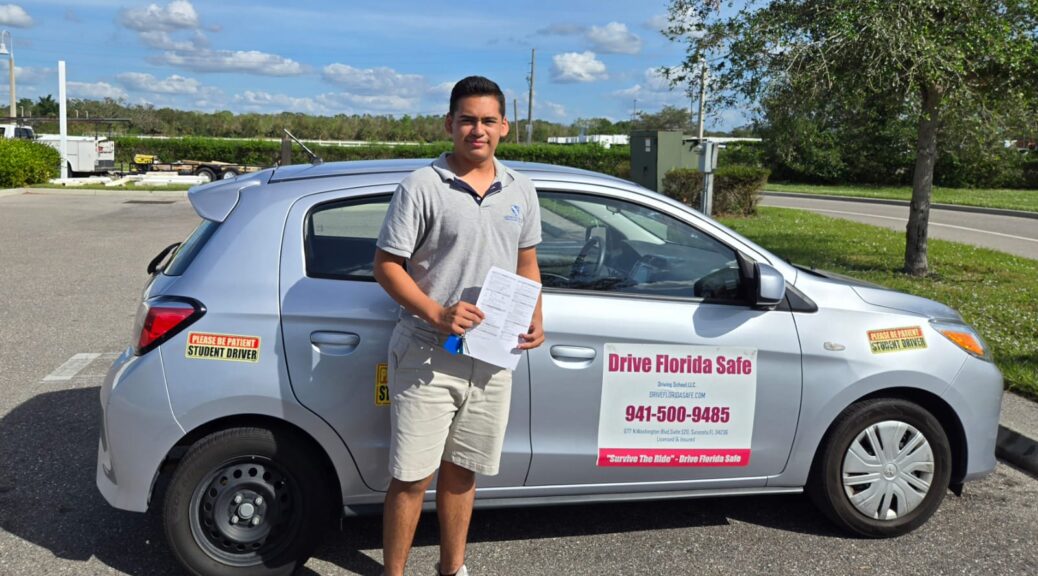In today’s fast-paced world, convenience is key, and that includes learning to drive or brushing up on your traffic knowledge. A 4-hour driving course online offers an efficient, flexible solution for drivers looking to meet legal requirements, reduce points on their license, or lower their insurance premiums.
At Lowest Price Traffic School, we provide comprehensive, affordable online courses that fit seamlessly into your schedule. Whether you’re juggling work, school, or family commitments, our platform ensures a stress-free experience. For those who prefer a traditional setting, our in-person traffic school provides hands-on, engaging instruction tailored to individual needs. To learn more or book your course, call us at (941) 500-9485 today!
What is a 4-Hour Online Driving Course?
A 4-hour online driving course is designed to address common driving challenges while educating drivers on traffic laws, defensive driving techniques, and safe driving habits. Often referred to as a Basic Driver Improvement (BDI) course, it’s commonly taken for:
- Removing or avoiding points on your license.
- Satisfying a court order after a traffic violation.
- Preventing an increase in insurance premiums.
- Gaining essential driving skills to reduce risks on the road.
This course is fully online, making it easy to access from the comfort of your home or on the go. It’s user-friendly, interactive, and engaging, ensuring you retain critical information.
Why Choose an Online Driving Course?
- Convenience and Flexibility
One of the biggest advantages of an online course is the ability to learn at your own pace. Whether you’re an early bird or a night owl, the course is available 24/7 to fit your schedule. - Cost-Effective
Online driving courses are more affordable than traditional in-person options, saving you money while providing the same high-quality education. - Comprehensive Content
The curriculum covers essential topics such as traffic laws, defensive driving techniques, and real-world scenarios, equipping you with the skills needed to drive safely and responsibly. - Certification Upon Completion
Upon completing the course, you’ll receive a certificate that can be submitted to your state’s Department of Motor Vehicles (DMV) or insurance company.
The Advantages of In-Person Traffic School
While online courses offer unmatched flexibility, some learners thrive in a classroom environment. Our in-person traffic school provides the opportunity for direct interaction with experienced instructors who can answer questions, clarify concepts, and provide personalized guidance.
Benefits of in-person classes include:
- Hands-on learning in a structured environment.
- Real-time answers to your questions.
- Engaging group discussions that enhance understanding.
- Opportunities to network with fellow learners.
If you prefer a more traditional learning experience, call (941) 500-9485 to enroll in our in-person traffic school today!
Key Topics Covered in a 4-Hour Online Driving Course
Our course is designed to be concise yet comprehensive, ensuring you gain all the knowledge needed to become a safer, more responsible driver. Here are the key areas covered:
- Traffic Laws and Regulations
Learn the latest traffic rules, road signs, and driving laws to stay compliant and avoid penalties. - Defensive Driving Techniques
Understand how to anticipate potential hazards, handle challenging road conditions, and respond effectively to aggressive drivers. - The Dangers of Distracted Driving
Discover the risks associated with distractions such as texting, eating, or using a GPS while driving. - Alcohol and Drug Impairment
Explore the impact of substances on your ability to drive safely and the legal consequences of driving under the influence. - Safe Driving Practices
Gain practical tips for maintaining focus, managing stress, and ensuring safety for yourself and others on the road.
Who Should Take a 4-Hour Driving Course Online?
This course is ideal for:
- Drivers with Traffic Violations: If you’ve received a ticket, completing this course may prevent points from being added to your license.
- Insurance Discounts: Many insurance companies offer discounts to drivers who complete a defensive driving course.
- Teen Drivers: Young drivers can benefit from learning safe driving habits early in their driving journey.
- Experienced Drivers: Refresh your knowledge of traffic laws and improve your driving skills.
How to Enroll in a 4-Hour Online Driving Course
Getting started is simple:
- Choose the Right School
At Lowest Price Traffic School, we pride ourselves on offering quality education at an affordable price. - Sign Up Online
Our website makes registration quick and easy. Just provide basic details, choose your course, and start learning immediately. - Complete the Course
Work through the modules at your own pace. Interactive quizzes and engaging content make learning enjoyable. - Receive Your Certificate
After completing the course, download or request a mailed copy of your certificate to submit to the DMV or your insurance provider.
For assistance, contact us at (941) 500-9485.
Why Choose Lowest Price Traffic School?
We understand that traffic school isn’t something most people look forward to, which is why we make the experience as seamless as possible. Here’s why we’re a top choice:
- Affordable Pricing: Get the best value for your money with our competitively priced courses.
- User-Friendly Platform: Navigate through the course with ease, even if you’re not tech-savvy.
- Experienced Instructors: Our in-person classes are led by certified professionals with years of teaching experience.
- State-Approved Courses: Rest assured that our curriculum meets all state requirements.
Making the Most of Your Online Course
To maximize your learning experience:
- Set aside uninterrupted time to focus on the course material.
- Take notes to reinforce key concepts.
- Review sections as needed to fully understand the content.
- Practice safe driving habits in real life to apply what you’ve learned.
Final Thoughts
At Lowest Price Traffic School, we’re committed to helping drivers succeed. With both online and in-person traffic school options, you can choose the format that best fits your needs. Ready to start? Call us at (941) 500-9485 or visit our website to register today.
Driving doesn’t have to be daunting. Let us guide you on your journey to becoming a confident, responsible driver!
A 4-hour driving course online is a smart investment in your safety and driving record. Whether you’re seeking to avoid points, lower insurance costs, or enhance your driving skills, this course offers a convenient, effective solution.








